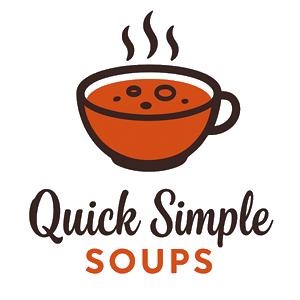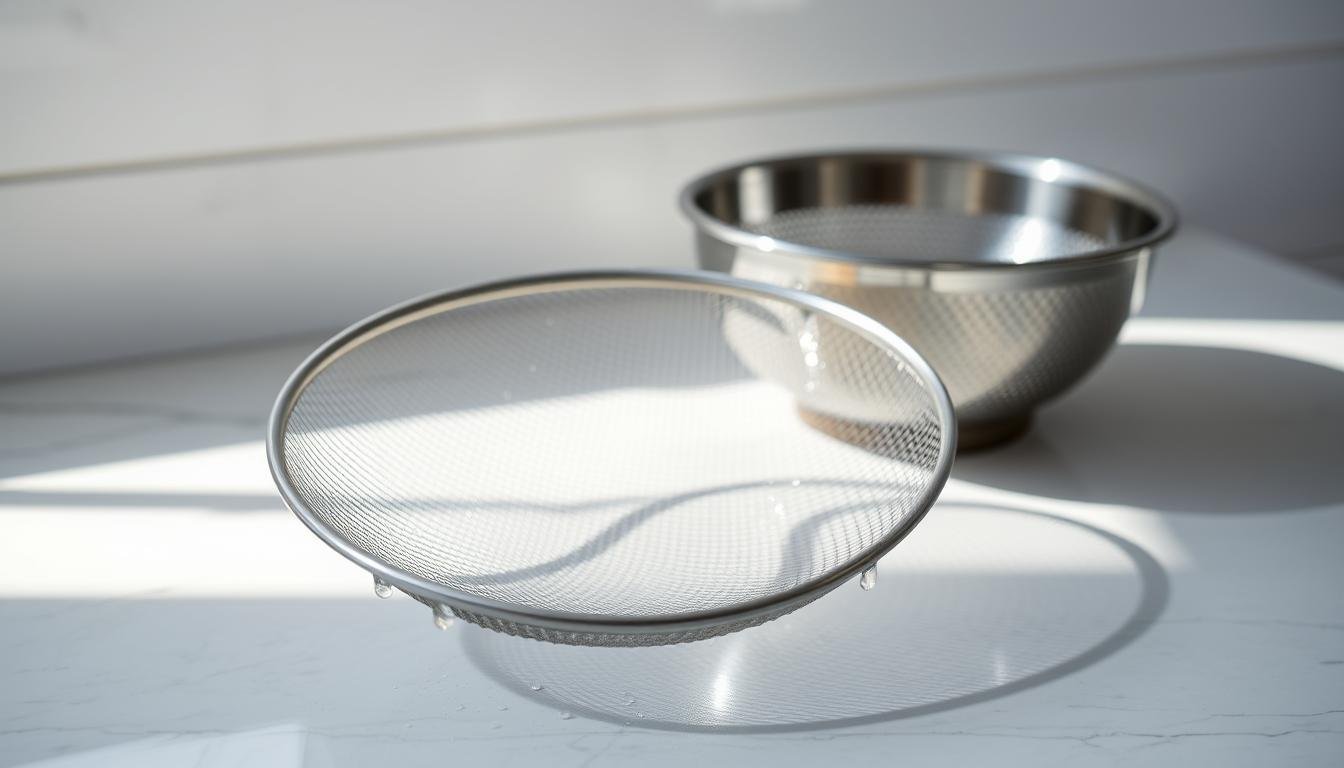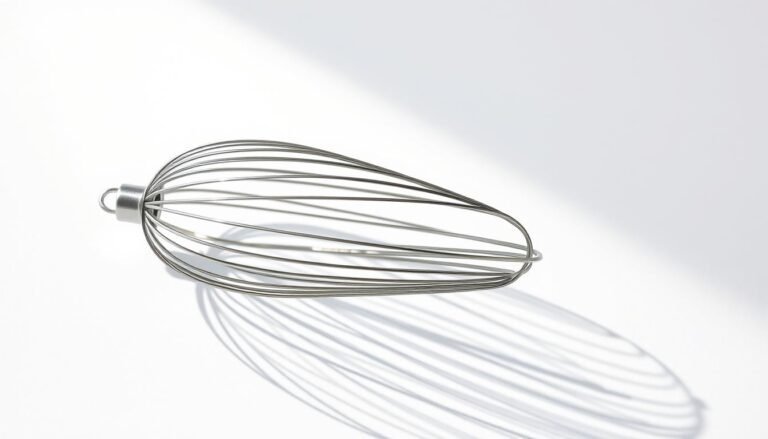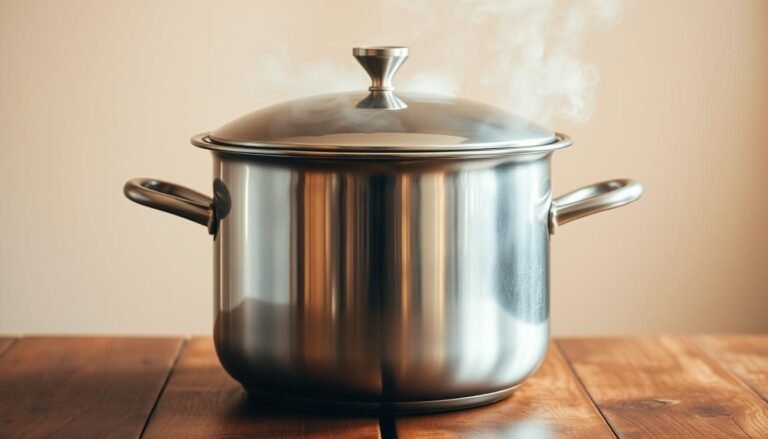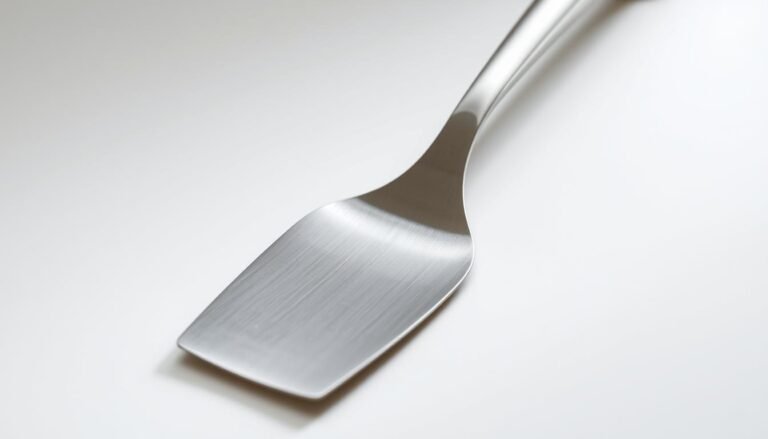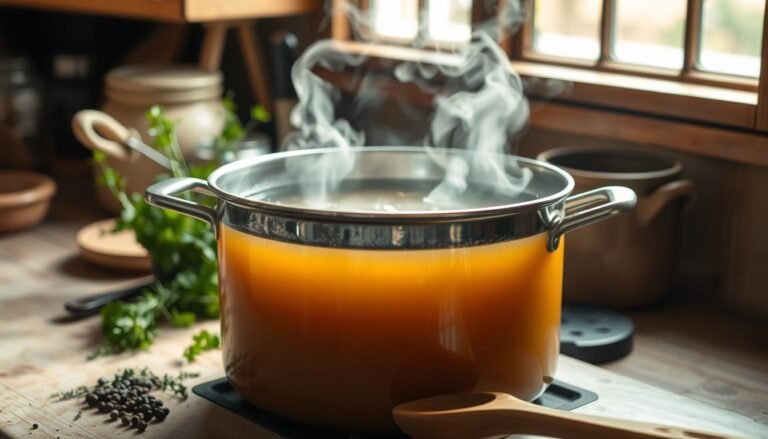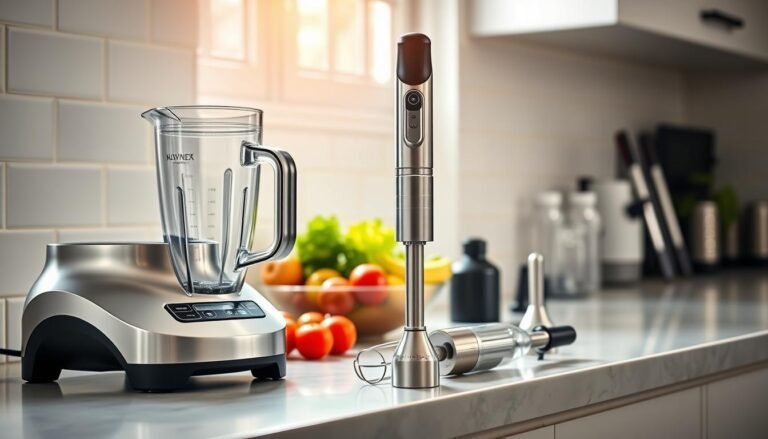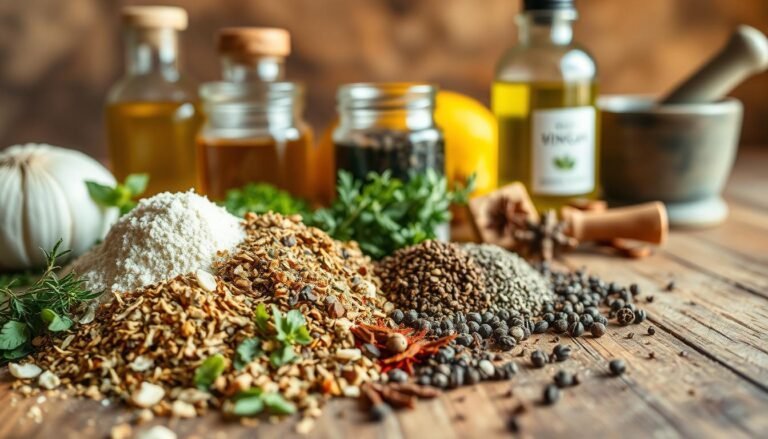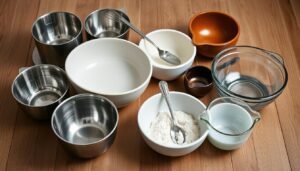Disclosure: This Post Contains Affiliate Links; We earn a commission on purchases.
In the kitchen, effective draining and rinsing are key for many dishes. Home cooks often get confused between colanders and sieves. Knowing their differences helps make kitchen tasks easier.
A colander is great for draining pasta and rinsing veggies. It has big holes for water to flow through. A sieve, with its smaller holes, is better for sifting flour or straining sauces.
Choosing the right tool makes cooking better and food taste better. This article will help you pick the right tool for your kitchen needs.
Key Takeaways
- Understand the primary functions of a colander and a sieve.
- Learn how to choose the appropriate tool for specific kitchen tasks.
- Enhance your cooking efficiency with the right kitchen strainer.
- Improve food quality by using the correct straining tool.
- Streamline your kitchen workflow by clarifying the roles of these staples.
Understanding Kitchen Strainers: Definitions and Basic Differences
Kitchen strainers come in many forms. The most common are colanders and sieves. Each has its own purpose. Knowing the difference is key for cooking well.
What is a Colander? Features and Design
A colander has holes for draining liquids from foods like pasta and rice. It’s big and sturdy for handling lots of food. It’s made from durable materials like stainless steel or plastic.
What is a Sieve? Characteristics and Construction
A sieve has a fine mesh for straining small solids or sifting ingredients. It’s better than a colander for precise tasks. Bakers and cooks use it for sifting flour or straining sauces.
Key Structural and Functional Differences
Colanders and sieves differ in design and use. Colanders drain big amounts of food. Sieves are for finer tasks. Knowing this helps pick the right tool for the job.
Colander or Sieve: When to Use Each Tool
Kitchen tasks need the right tool, like for draining and rinsing. Both colanders and sieves are key, but knowing when to use them is important. It makes cooking better and faster.
Ideal Tasks for Colanders
Colanders are great for big food jobs, like draining pasta or washing veggies. A stainless steel colander is strong and lasts long, perfect for these tasks.
- Draining cooked pasta and noodles
- Washing and rinsing vegetables and fruits
- Draining canned goods
Perfect Applications for Sieves
Sieves, with their fine mesh, are best for precise tasks. They’re great for rinsing rice or straining sauces. They’re also good for sifting dry ingredients like flour.
- Rinsing rice, quinoa, and other grains
- Straining sauces and soups
- Sifting flour and other baking ingredients
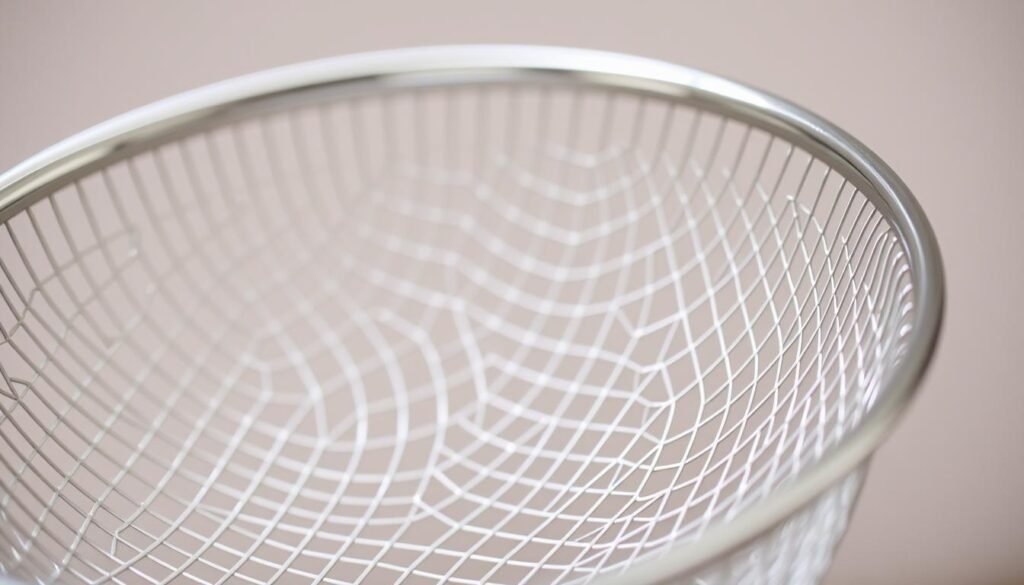
When Either Tool Will Work
Sometimes, you can use either a colander or a sieve, depending on what you need. For example, rinsing quinoa works with either, but a sieve is better for its fine mesh.
Having both a colander and a sieve makes cooking easier and more fun. It prepares you for many tasks in the kitchen.
Choosing the Right Tool for Specific Kitchen Tasks
Choosing between a colander and a sieve depends on the task. Both are key in the kitchen, each for different tasks. This affects the outcome of cooking and baking.
Draining Pasta, Vegetables, and Larger Foods
A colander is best for draining pasta, veggies, and big foods. It has a big capacity and holes for fast water removal. This is key for not soggy pasta when cooking pasta.
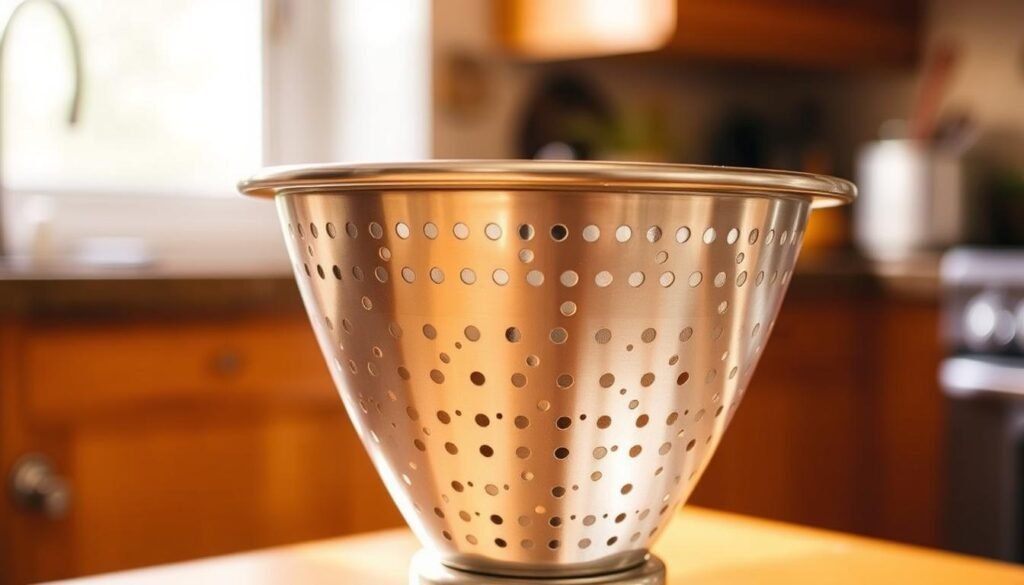
Rinsing Rice, Quinoa, and Other Grains
Rinsing rice, quinoa, and grains needs a finer mesh. A sieve or fine-mesh strainer is better. It removes impurities and excess starch, making grains better. A starter kitchen equipment set with both colanders and sieves is a good buy.
Straining Sauces and Liquids
A sieve is best for straining sauces and liquids. Its fine mesh is great for smooth sauces. It’s vital for making soups and sauces better.
Sifting Flour and Other Baking Ingredients
A sieve or sifter is a must for baking. It adds air, removes lumps, and mixes ingredients well. This is key for the right texture in baked goods like cakes and pastries.
Mesh Sizes and Their Importance
The mesh size of a kitchen strainer is very important. It affects how well it works for different tasks. Whether you’re draining pasta, rinsing grains, or sifting flour, the mesh size matters a lot.
Choosing the right mesh size is key for good results in cooking and baking. A fine mesh strainer is great for separating small particles.
Fine Mesh vs. Perforated Holes
Fine mesh strainers have tightly woven mesh. They’re perfect for sifting flour or straining sauces. Strainers with perforated holes are better for draining big food items like pasta or veggies.
Specialty Sieves for Specific Tasks
Specialty sieves are made for specific tasks, like sifting dry ingredients or straining delicate foods. They have unique mesh sizes for their intended use, ensuring they work well.
Multi-Purpose Strainers with Variable Mesh Sizes
For those who like versatile kitchen tools, multi-purpose strainers are great. They have interchangeable mesh sizes for different tasks. They can be used for draining or sifting, making them very useful.
In conclusion, knowing about mesh sizes in kitchen strainers can really help your cooking and baking. By picking the right strainer for your needs, you can prepare food more efficiently and effectively.
Material Considerations and Durability
Different materials in kitchen strainers offer various benefits. These include durability, heat resistance, and ease of cleaning. The material you choose can greatly affect how well the strainer works and lasts.
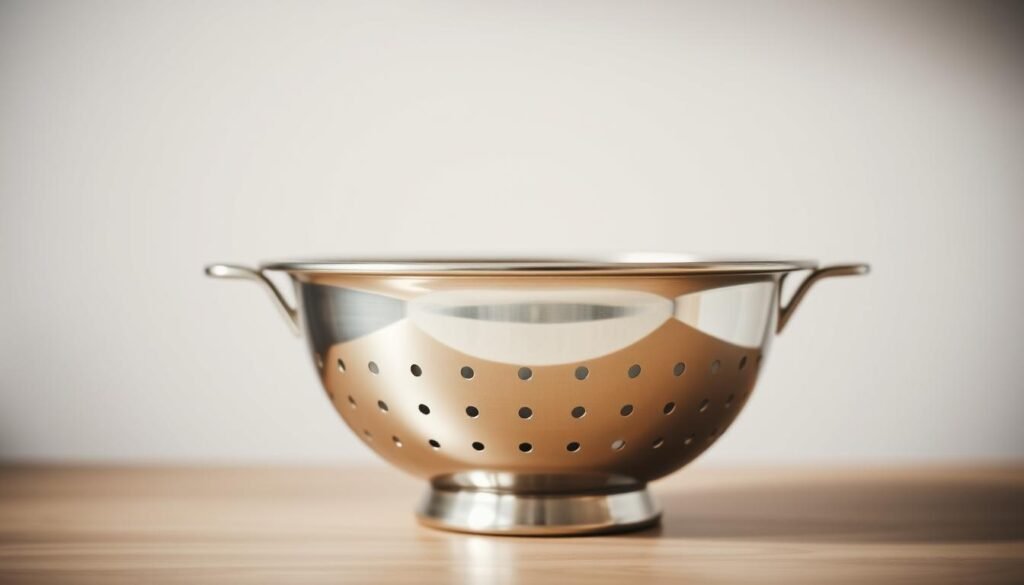
Stainless Steel Options and Benefits
Stainless steel is a top pick for kitchen strainers. It’s very durable and doesn’t rust easily. A stainless steel colander is strong, simple to clean, and lasts a long time. It’s perfect for tough tasks and can handle high heat.
Plastic, Silicone, and Other Materials
Plastic and silicone strainers are light and cheaper than stainless steel. They’re flexible and easy to put away. But, they might not last as long and can get scratches or cracks.
Heat Resistance and Dishwasher Safety
It’s key to pick a strainer that can handle heat and is dishwasher safe. A strainer that can take high temperatures is very useful. It can be used for many things, like draining hot pasta or rinsing herbs. Many strainers, like stainless steel and some plastics, are made to be dishwasher safe. This makes cleaning them a breeze.
In summary, the material of a kitchen strainer is very important. It affects how well it works and how long it lasts. Think about durability, heat resistance, and cleaning ease when picking a cooking utensil for your kitchen.
Conclusion: Making the Right Choice for Your Kitchen Needs
Knowing the difference between a colander and a sieve is key for great kitchen results. Whether you’re draining pasta or rinsing rice, the right strainer makes a big difference.
A colander is perfect for big foods like pasta, veggies, and fruits. But, a sieve is better for finer tasks like sifting flour or rinsing quinoa. The mesh size and material matter a lot too.
Think about what you need to do before choosing. For big pasta, a colander is best. But, for finer tasks, a cooking sieve is better.
Choosing the right tool helps you cook better and faster. Whether you’re a pro chef or just starting, the right strainer improves your cooking.
FAQ
What is the main difference between a colander and a sieve?
Can I use a colander instead of a sieve for straining sauces?
What type of strainer is best for sifting flour and other baking ingredients?
Are stainless steel colanders and sieves more durable than those made from other materials?
Can I put my kitchen strainer in the dishwasher?
What are the benefits of using a multi-purpose strainer with variable mesh sizes?
How do I choose the right mesh size for my kitchen strainer?
Can a kitchen strainer be used for tasks other than draining and rinsing?

Ryan Conlon is the comfort food fan behind QuickSimpleSoups.com, where he shares easy soup ideas, smart shortcuts, and helpful tips for busy home cooks. Ryan believes a good bowl of soup doesn’t need to be complicated—and he’s here to prove it. Whether you’re looking for quick weeknight meals or cozy classics with a twist, Ryan’s simple approach helps you serve up satisfying soups with minimal effort.
Subscribe to Our Newsletter
